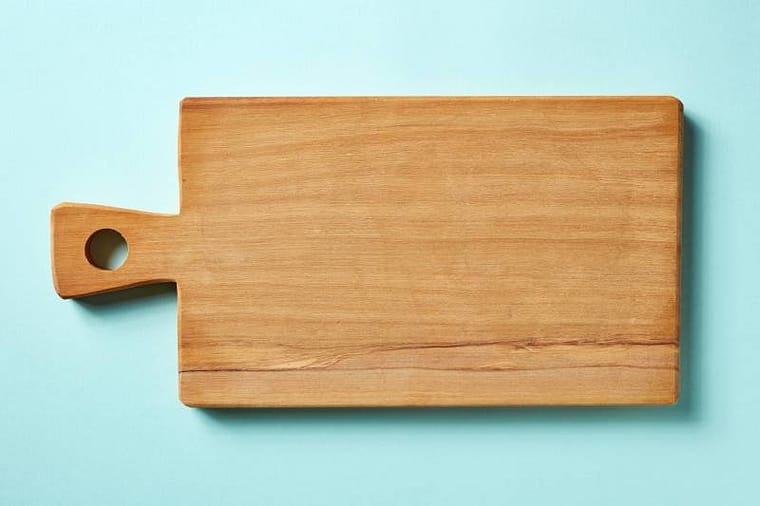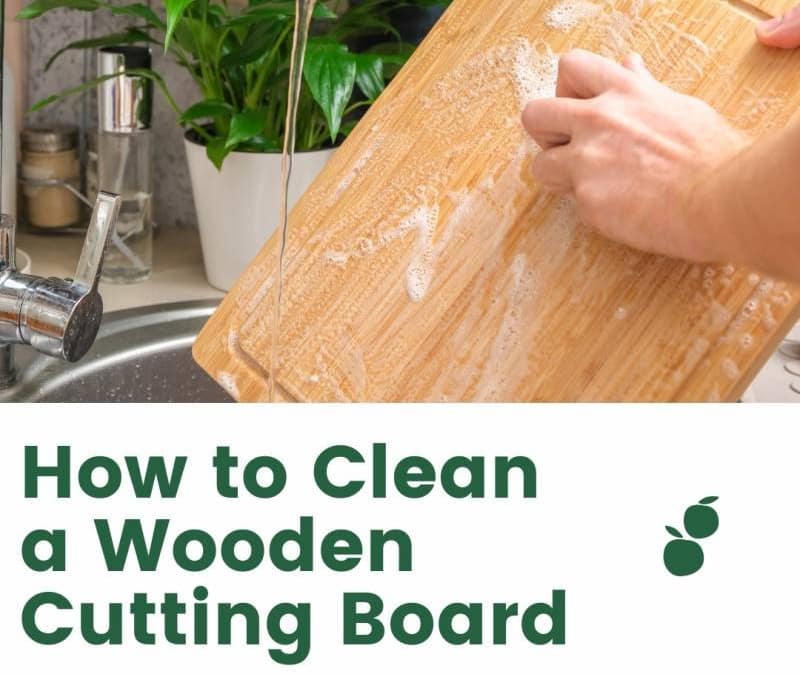Vegan Globetrotter is supported by our audience. When you purchase through one of our links, we may earn a small affiliate commission. As an Amazon Associate I earn from qualifying purchases. Your cost is not affected.
==================
Don’t worry – with time and effort; your wooden cutting board could look new again in no time! In this blog post, we’ll share tips on keeping your wooden cutting board in shape to continue aiding your food preparation adventures! So please grab a cup of coffee (or tea!), and let’s start!
Ways to Maintain a Wooden Cutting Board

Photo 123373846 © Reinis Bigacs | Dreamstime.com
I want to help you avoid these problems!
That’s why we’re here! Once your wooden cutting board is clean, be sure to oil it. It will not only keeps it shiny but also prevents cracks from forming. This article will teach you how to care for and maintain your beloved wooden cutting board. Safe and ready for use! Let’s learn how to manage and maintain our special wooden cutting board!
Difference Between Plastic and Wooden Cutting Board

Photo 47423293 © Olga Kovalenko | Dreamstime.com
| ID 19554279 © Anatoliy Sadovskiy | Dreamstime.com
Why not just use glass or plastic boards?
It’s true. Cutting boards come in many different materials. But the proper standard remains the wooden cutting board.
Wooden cutting boards are durable and last for years with proper care. Plus, they add warmth to a kitchen setting. The natural surface of a wooden cutting board makes it easier to clean and keep. So, we must give special attention so bacteria won’t grow on them.
What to Use to Clean a Wooden Cutting Board?

Photo 203080536 © Aleksey Satyrenko | Dreamstime.com
- Dishwashing Soap or Vinegar: These powerful cleaning agents can remove food residue and bacteria from your board. So many stains come off quickly with a bit of soap or vinegar.
- Hot Water (Not Boiling): Adding hot water helps sanitize your cutting board and loosens any dirt or grime buildup. Did you know hot water offers an excellent sanitizing agent without added chemicals?
- Clean Soft Spoon or Cloth: You’ll need a fresh sponge or cloth to clean your cutting board. I keep extra cloths on hand for such cleaning projects. They then go straight in the wash with our next kitchen towel batch. This keeps the kitchen clean and saves on paper towels, too.
- Baking Soda or Coarse Soap (optional): For tough stains or odors on your cutting board, coarse salt or baking soda can help. Extra tip: Baking soda offers a better all-around stain remover than most of the commercial products you can buy. And it saves so much money
- Mineral oil or wax: Wooden cutting boards need to oil regularly to prevent drying and cracking. Mineral oil or wax offers food-safe solutions that protect your board while keeping it looking brand new. Pro-Tip: Many of these products contain animal0-derived ingredients. We like the Caron & Doucet Vegan Brand as we know it works well and is truly vegan.
The Process to Clean a Wooden Cutting Board?

Photo 122763773 © Artem Beliaikin | Dreamstime.com
Handwashing is excellent for getting your kitchen items clean and sanitized. Yet, never put a wooden cutting board in the sink to soak. The water can cause it to crack and warp, which creates tiny fissures that bacteria can hide in and cause foodborne illnesses. To keep it safe, handwash the board each time you use it using the steps outlined below.
1. Clean the Cutting Board with Dishwashing Soap
Please get rid of any food scraps on your cutting board before cleaning it. Then, rinse with hot water and apply some dish soap. Use a sponge to scrub it down—especially knife marks, scratches, and areas where bacteria may lurk in the cracks.
2. Clean Both Sides of the Cutting Board
Make sure to clean both sides of the board. Even if you only cut on one side, juices from the ingredients can drip over and taint the other. If your cutting board has a handle, make sure you will wash that too.
3. Rinse the Cutting Board and Dry
Then give the board a good rinse with warm water, dry it with a clean cloth or paper towel, and let it air dry before putting it away.
Bleach to Clean the Wooden Cutting Board
Suppose you have used your cutting board to cut ingredients with potential bacteria. Using bleach can help to kill bacteria on the board.

Photo 185670031 © Avictorero | Dreamstime.com
1. Create the Solution
Clean it with dish soap first. Then make a bleach solution by putting a tablespoon of chlorine bleach into a gallon of water. Or, use strong vinegar or hydrogen peroxide.
2. Submerge the Cutting Board
Cover the board with the solution or use the key to soak the entire surface. Let it work for 2-3 minutes to kill all the bacteria.
3. Rinse Again and Dry the Cutting Board
Finally, wash it with warm water and dish soap once more to remove odor, then rinse and dry it thoroughly. If the board has any wetness, it can damage the wood.
Clean the Cutting Board Using Lemon and Salt
Remember to give your cutting boards a good scrub with lemon and salt once a month. This can help remove any stains and freshen up the board if it smells of all the garlic you’ve been chopping.

Photo 123249077 © Maria Dmitrieva | Dreamstime.com
1. Scrubbing
To do this, sprinkle coarse salt (like sea or kosher salt) over the board. Then, rub half a lemon over the board in small circles toward the grain.
2. Sit and Rinse
Let it sit for five minutes or more, then rinse off all the salt before drying.
Oiling and Waxing the Wooden Cutting Board

Applying oil to an end grain cutting board
It’s important to oil and wax wood after frequent washing. It helps keep it from drying out, cracking, or warping. Conditioning of the cutting board creates a protective layer against moisture. It also prevents staining and stops the absorption of solid odors.
Apply Oil and Wax to Wooden Cutting Board
If you have preferred oils or waxes to use, then feel free to continue using them. But, one method that works well is applying food-safe mineral oil—also, use a clean tea towel or a paper towel to cover the entire surface of the board.
Stand the Wooden Cutting Board
Stand it upright for several hours (or overnight if possible). Then wipe off any excess residue the following day.
Apply Wax to the Board.
Afterward, apply a food-safe wax or wax blend to seal in the oil. For an even better result, some experts recommend heating the wax first for deeper penetration into the wood.
How Often Do You Need to Oil and Wax the Wooden Cutting Board?
There needs to be a scheduling approach to oiling your wooden cutting board. It depends on the environment where you keep it, the type of wood, and how often you use it. A good starting point is to oil it once a month, but if it looks dry, feel free to give it some extra love.
Inspect your board’s oiling.
Checking the wax coating is easy. Using your fingertips, you must sprinkle a few drops of water on its surface. You’re good to go if the water beads up and doesn’t soak in! If not, then your wooden cutting board needs some more oiling.
Repair a Damaged Wooden Cutting Board

Photo 258998159 © Kargona | Dreamstime.com
Your wooden cutting board may have become worn down with years of use. To restore its former glory, you’ll need to do some sanding.
- Some experts recommend starting with 100-grit sandpaper. Then work your way up, finishing with 220-grit. For deeper gouges, 80-grit is the best option to begin with.
- If you want an even smoother finish, go on up to 320 or 400-grit – but 220-grit should do the trick in most cases.
- Cut the sandpaper to fit around a small box or a sanding block. Work in the direction of the grain (on end-grain boards, pick any direction).
- Switch to a new one when the paper clogs or wears down. Keep going until you’ve removed all deep gouges. Use the coarsest grit and then all unevenness with each after grit until you’re happy with it.
- Be sure to sand both sides of your board for an even treatment and less warping later.
- Once finished, brush away the dust and apply oil and wax for a polished finish!
Is it Worth it to Repair a Cracked Board?

Photo 188636569 © Mustafa Kaya | Dreamstime.com
In most cases, getting a new cutting board is best if it’s warped or cracked. But, if you want to repair it, experts suggest taking it to a professional woodworker. A woodworker can break the board apart, sand it, and remove the damaged parts. They can do that before reassembling and refinishing it.
Maintain Your Wooden Cutting Board
Properly caring for your wooden cutting board is essential to its long-term stability. To prevent dryness, cracks, and warping, oil the board once a month with food-grade mineral oil. Avoid immersing in water or soaking the board. Simple washing with a cloth is helpful. But soaking your board damages the wood.
Read More Here
FAQs
Can a wooden cutting board be cleaned with vinegar?
If you have a wooden cutting board, you can use vinegar to disinfect it. Put a solution of equal parts water and white vinegar on the board, let it sit for a while, and then wipe it down. Before using the board again, wash it with hot water and let it dry thoroughly.
Is it safe to clean a wooden cutting board in the dishwasher?
Putting a wooden cutting board in the dishwasher is not advised since excessive heat and moisture can cause the wood to crack or warp. Use hot, soapy water to hand-wash the board, then sanitize as necessary.





Don't miss out
when new recipes and information are added!
Join our newsletter for free recipes,
healthy living inspiration, and special offers
You have Successfully Subscribed!